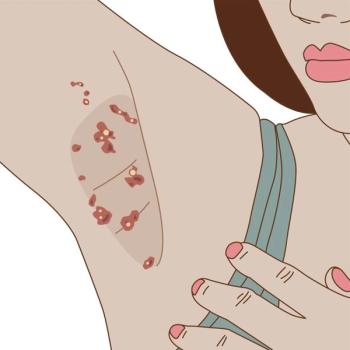
Wegener's Granulomatosis (WG)
Cutaneous and subcutaneous lesions of the extremities may be clues to the presence of rheumatic diseases such as systemic lupus erythematosus (SLE), rheumatoid arthritis (RA), and the vasculitides. The history and physical examination can generally help confirm the cause. Skin biopsy is sometimes necessary for a definitive diagnosis; useful results depend on a technique that gives the depth necessary to see the pathology and proper interpretation of biopsy specimens by an experienced dermatopathologist.
Cutaneous and subcutaneous lesions of the extremities may be clues to the presence of rheumatic diseases such as systemic lupus erythematosus (SLE), rheumatoid arthritis (RA), and the vasculitides. The history and physical examination can generally help confirm the cause. Skin biopsy is sometimes necessary for a definitive diagnosis; useful results depend on a technique that gives the depth necessary to see the pathology and proper interpretation of biopsy specimens by an experienced dermatopathologist.
Here we present a concise photoessay of relatively common “lumps, bumps, and holes” that may be the presenting manifestations of vasculitis and Behet's disease. (In part 1, CONSULTANT, January 1999, we discussed SLE and RA.)
VASCULITIS
The wide spectrum of vasculitides, characterized by vascular inflammation and blood vessel damage, is usually categorized according to the size of vessels involved.1
Histologically, necrotizing cutaneous vasculitis manifests fibrinoid degeneration of the blood vessel wall, with a predominantly neutrophilic infiltrate in the wall.1 Specific conditions include nodular vasculitis, polyarteritis nodosa, Wegener's granulomatosis, Churg-Strauss syndrome, cryoglobulinemia and cryofibrinogenemia, livedo vasculitis, erythema elevatum diutinum, and lymphomatoid granulomatosis.
Nodular vasculitis is characterized by a chronic, recurrent panniculitis on the calves, and less often the shins, mostly in women aged 40 years or older (Figure). The lesions are slightly painful nodules that may ulcerate. Standard treatments include systemic therapies, such as NSAIDs, antimalarials, and prednisone, as well as local care.
Some patients with the clinical and pathologic features of nodular vasculitis also have a positive purified protein derivative (PPD) tuberculin test. These patients have erythema induratum of Bazin, a condition associated with hypersensitivity to tuberculin. In one study, patients with a positive PPD tuberculin test were successfully treated with antituberculous therapy.2
Newsletter
Enhance your clinical practice with the Patient Care newsletter, offering the latest evidence-based guidelines, diagnostic insights, and treatment strategies for primary care physicians.


















































































































































































































































































